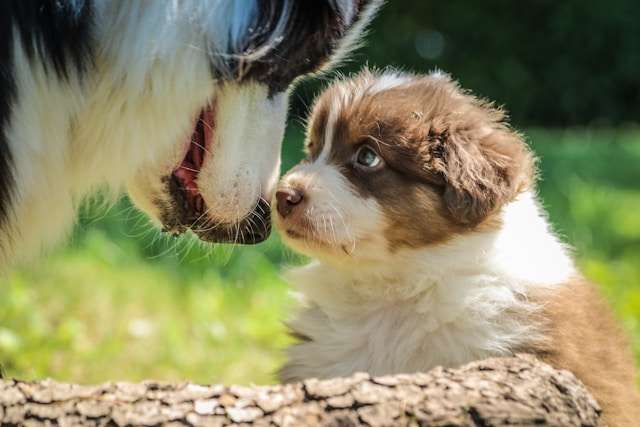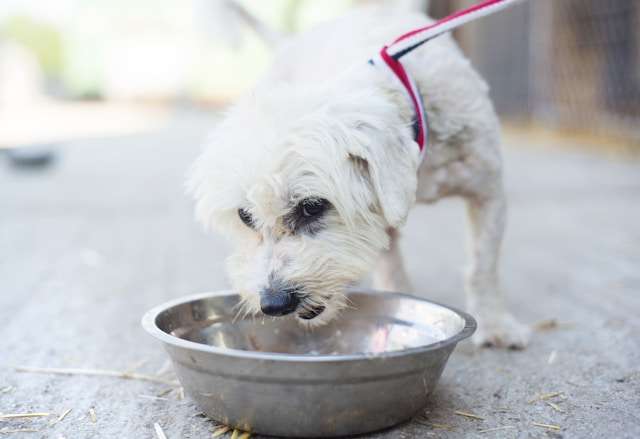Best Dog Food for Herding Breeds

Herding breeds are among the most active, hardworking dogs, and their energy needs can be substantial. From Australian Shepherds to Border Collies, these dogs thrive on tasks that require endurance and agility. But to keep their performance top-notch, choosing the right dog food isn’t just important—it’s essential.
High-quality nutrition ensures they have the stamina and support needed for daily challenges. For an in-depth look at similar active breeds, check out Best Dog Food for Sporting Breeds.
Table of Contents
Understanding Herding Breeds
Herding dogs are renowned for their intelligence, agility, and unparalleled work ethic. Understanding these breeds and their unique traits helps us appreciate their dietary needs tailored to their active lifestyles.
Common Herding Breeds
Herding breeds include some of the most recognizable and cherished dogs. These canines were initially bred to help shepherds and farmers control livestock, but they’ve earned a reputation as loyal companions. Here are a few popular examples:
- Border Collies: Known for their incredible intelligence and stamina. Learn more about their characteristics in What Are Border Collies? Intelligent Herding Dogs.
- Australian Shepherds: Athletic and eager to please, they excel in agility and herding tasks. For a detailed look, explore Overview Of The Australian Shepherd.
- Corgis: Despite their small size, Corgis packs a punch regarding energy and the ability to herd cattle.
These breeds are part of the larger herding group defined by their energy and trainable nature. For a broader perspective, you can check the AKC Herding Group.
Behavior and Energy Levels
Have you ever noticed how herding breeds seem to be in constant motion? That’s because they’re built for it. Their high energy levels are matched by sharp intelligence, making them both a joy and a challenge. These dogs thrive on mental and physical stimulation, whether herding sheep or mastering a new trick in a backyard.
This boundless energy directly impacts their nutritional needs. Without the right balance of protein, fats, and complex carbohydrates, they’ll run out of steam before their day’s work is done. Herding dogs also need food enriched with omega-3 fatty acids for their coat, antioxidants for muscle recovery, and glucosamine to keep joints strong. For more insights, here is an excellent resource on choosing herding dogs.
These characteristics make herding breeds stand out—but they also demand a level of care and attention that matches their unique personalities. Want to find the perfect dog to fit your lifestyle? Read the Dog Breed Guide for personalized tips.
Nutritional Needs of Herding Breeds
Herding dogs are built for stamina, agility, and long days of hard work. Their nutrition must support their demanding lifestyles, maintaining energy and strength while staying healthy. What makes their diets unique? Let’s explore the key components.
High Protein Requirements
Herding breeds need protein-packed diets to build and maintain lean muscle. Think of protein as the building blocks for your dog’s muscles, keeping them strong and ready for action. Active herding dogs, such as Australian Shepherds, burn through energy rapidly—making protein even more critical.
- Why Protein Matters: It helps repair muscles after a long day and supports normal body functions.
- Ideal Sources: Look for high-quality animal proteins like chicken, beef, fish, and eggs in your dog’s food.
Active breeds like the Belgian Malinois can benefit significantly from consistent protein sources. Learn more about how to support their energy needs in Are Belgian Malinois Good Dogs?
For detailed information about herding dogs’ unique protein needs, see Nutritional Needs of Herding Dogs.
Fat for Energy
Fats are a powerhouse of energy for herding breeds. These dogs rely on fat to fuel their long, active days without burning out. A diet with the right balance of fat can improve endurance, coat health, and overall vitality.
- Why Fats Are Key: They provide more calories per gram than protein or carbohydrates, making them ideal for dogs with higher energy outputs.
- Best Fat Sources: Include healthy fats like fish oil, chicken fat, flaxseed, and canola oil.
Keeping fat levels optimized ensures your dog doesn’t run out of energy after an hour of play or work. Check out Keeping Your Herding Dog Healthy for tips on herding dog health.
Essential Vitamins and Minerals
Herding breeds also need a mix of vitamins and minerals to stay healthy. These nutrients support their immune system, bones, and overall well-being.
- Calcium & Phosphorus: For bone health, especially in high-impact activities.
- Vitamins A, E, and C: Promote immune function and reduce inflammation.
- Zinc & Omega-3 Fatty Acids: Keep their coat shiny and skin irritation-free.
Balancing these elements in your herding dog’s diet isn’t always easy. Many premium foods are enriched with a vitamin-packed blend, but always check the label for confirmation. Dive deeper into their dietary needs at Feed Your Herding Dog Right – The Hungry Puppy.

Photo by Renato Rocca.
These components—proteins, fats, and essential nutrients—form the foundation of a herding breed’s optimal diet.
Best Dog Foods for Herding Breeds
Herding breeds, with their impressive stamina and work ethic, require top-notch nutrition tailored to their active lifestyles. The right food provides the energy and nutrients these dogs need to thrive, whether herding livestock or enjoying an energetic day outdoors.
Top Brand Recommendations
Not all dog food is created equal, and the right brand makes all the difference for herding breeds. Here are some top-rated options based on reviews and nutritional value:
- Orijen Original: This high-protein food is packed with biologically appropriate ingredients and is ideal for active dogs. Its emphasis on fresh regional ingredients mirrors natural canine diets.
- Blue Buffalo Wilderness: A grain-free option featuring high-quality protein sources like chicken or salmon, perfect for maintaining lean muscle mass.
- Taste of the Wild High Prairie: Made with real roasted meats, this food offers high digestibility and energy levels for working breeds.
- American Natural Premium: Their formulas, such as the one highlighted for Australian Shepherds, focus on balanced protein, carbs, and healthy fats. Learn more about it here.
Each of these brands addresses the unique needs of herding breeds, ensuring your dog has the fuel needed for their tireless efforts. For more personalized insights, explore What Makes Good Dog Food?
Ingredient Quality and Selection
When choosing food for your herding dog, ingredient quality isn’t just a nice-to-have—it’s a must. Active breeds need food that fuels their activity and promotes overall health. Here’s what to look out for:
- High-Quality Proteins: Meat sources like chicken, beef, and fish should top the ingredient list. They help maintain muscle mass and energy levels.
- Complex Carbohydrates: Ingredients like sweet potatoes and brown rice provide sustained energy.
- Healthy Fats: Omega-3-rich foods like flaxseed and fish oil improve skin, coat health, and joint support.
- No Fillers or By-Products: Avoid foods with unnecessary fillers like corn, soy, or wheat—they add calories but offer little nutritional value.
Investing in high-quality food ensures the longevity and vitality of your herding breed. Are you curious about specific recipes? Take a look at this guide on dog food for herding breeds.
Wet vs. Dry Dog Food
The debate between wet and dry food is shared among dog owners. Both options have their pros and cons, especially for high-energy herding dogs.
Dry Dog Food
- Pros:
- It has a long shelf life and is easy to store.
- It helps reduce tartar buildup for healthier teeth.
- More cost-effective for daily feeding.
- Cons:
- Often less palatable, especially for picky eaters.
- It can be more challenging for some dogs to digest.
Wet Dog Food
- Pros:
- High moisture content keeps dogs hydrated.
- It is easier to chew for senior dogs or those with dental issues.
- Often more appetizing due to texture and aroma.
- Cons:
- Shorter shelf life after opening.
- It can be pricier compared to kibble.
Which one works best? For most herding breeds, a mix of wet and dry food strikes the right balance, ensuring proper hydration and dental health and seeking the best of both worlds. Feed Your Herding Dog Right offers insights on premium combination feeding.

Photo by Magda Ehlers.
Herding breeds deserve the best, and your food choice significantly affects their overall health and happiness.
Human Food Considerations
Feeding human food to herding breeds can be a fun and rewarding way to bond with your dog, but knowing what’s safe and what’s not is essential. Some human foods can complement their diet, while others can lead to serious health issues. Let’s explore safe options and foods to avoid.
Safe Human Foods
Several human foods can safely enhance your herding dog’s diet. These can be occasional treats or used to supplement other nutrients. Ensure you’re serving them in moderation, and always consult with your veterinarian before introducing new foods. Here’s a list of safe options:
- Carrots: Great for dental health and loaded with beta-carotene.
- Apples: A crunchy snack rich in vitamins A and C. Avoid the seeds and core.
- Cooked Chicken: A lean and protein-packed option that supports muscle repair.
- Plain Yogurt: Ideal for probiotics, aiding digestion. Opt for unsweetened and low-fat types.
- Peanut Butter: Packed with healthy fats and protein. Make sure it doesn’t contain xylitol.
- Blueberries: A tasty antioxidant powerhouse, perfect for boosting their immune system.
- Sweet Potatoes: High in fiber and vitamins, perfect for a healthful energy source.
- Green Beans: Low-calorie yet packed with vitamins and minerals.
BetterVet’s Guide is helpful and easy to follow for a more detailed list of safe human foods.

Photo by Yaroslav Shuraev.
Toxic Foods to Avoid
Unfortunately, many human foods that are delicious to us can be dangerous—even deadly—for dogs. Knowing what to keep out of reach is crucial. Here’s a list of common toxic foods:
- Chocolate: Contains theobromine, which is extremely harmful to dogs.
- Grapes and Raisins Can cause kidney failure, even in small amounts.
- Onions and Garlic Damage red blood cells and can lead to anemia.
- Avocado: Contains persin, which can upset the stomach.
- Alcohol: Completely toxic to dogs, affecting their liver and brain.
- Macadamia Nuts: Can cause vomiting, weakness, and tremors.
- Caffeine: Found in coffee, tea, and energy drinks, it can lead to hyperactivity and seizures.
Referencing trusted sources is critical when feeding human food to dogs. See AKC’s List of Foods Dogs Should Avoid for more details on toxic foods.
Feeding your herding breed wisely ensures they stay happy, healthy, and energetic for their active days. For further insights into healthy food options, you might explore Is Olive Oil Good for Dogs?.
Feeding Guidelines and Portions
Understanding how to feed your herding breed properly is as important as choosing the right food. Portion sizes and feeding frequency significantly influence their energy levels, weight, and overall health. Let’s break it down so feeding your active dog becomes a stress-free experience.
Portion Control
Feeding the right portion is essential for your dog’s health. Overfeeding can lead to obesity, while underfeeding can leave them lethargic and undernourished. So, how do you calculate the perfect portion size? It depends on factors like their age, weight, and activity levels.
- Puppies: Puppies need smaller, nutrient-dense portions to fuel their rapid growth. Follow feeding charts typically found on high-quality puppy food packaging, as Hill’s Science Diet Puppy Guide recommends.
- Adult Dogs: Multiply your dog’s weight by 20–30 calories per pound (adjust for activity level). High-energy herding dogs may need extra calories.
- Senior Dogs: As activity decreases with age, caloric intake should be adjusted to prevent unnecessary weight gain.
Always balance portions with their daily energy expenditures. A slight increase may be appropriate if your dog has spent hours herding or playing. Looking for more insights? Check out Feeding Your Herding Dog Right for tips specific to high-energy breeds.

Photo by Cottonbro Studio.
Feeding Frequency
How often should your herding dog eat? Feeding frequency affects their energy levels and digestion. Active herding dogs benefit from structured feeding schedules that prevent energy dips and help maintain stamina throughout the day.
- Puppies: Feed 3–4 times daily to support their high growth rate and smaller stomach capacity.
- Adults: Split food into two meals—morning and evening. This helps sustain energy throughout the day. Dogs with exceptionally high activity levels may benefit from a mid-day or small post-activity snack.
- Seniors: Two meals per day suffice, with less focus on calorie-dense food and more on easily digestible nutrients.
Frequent meals also help avoid the risk of bloat, a condition common in deep-chested active breeds. Adjust the frequency as needed based on their health and vet recommendations. For detailed feeding routines for working dogs, explore Fueling Performance: Feeding Regimens for Working Dogs.
By mastering portion sizes and feeding schedules, you’ll provide your herding companion with the fuel they need to thrive, no matter how active their day gets.
Maintenance and Health Monitoring
Keeping your herding dog’s health in check is one of the most important things you can do as an owner. These active dogs aren’t just hard workers—they’re companions who rely on you to notice when something’s off. Whether routine vet visits or adjusting their diet to fit their needs, a proactive approach makes all the difference.
Regular Veterinary Check-ups

Photo by Goochie Poochie Grooming.
Veterinary check-ups should not be seen as optional—they’re essential. Herding breeds like Border Collies or Australian Shepherds often hide signs of illness, making regular visits vital for catching early signs of potential issues. Think of these visits as your dog’s version of a wellness exam. They allow your veterinarian to perform routine tests, check critical areas like heart rate, teeth, and coat health, and recommend lifestyle adjustments.
Missing out on regular vet care can lead to underlying problems bubbling under the surface. Whether it’s joint issues or weight fluctuation, routine monitoring prevents minor problems from escalating into something serious. For more insights, here’s why regular vet visits are important.
Early detection methods like blood tests or X-rays make all the difference for herding breeds, which are prone to joint stress and other common ailments tied to their active lives. If you’re raising a dog like a Mastiff, check out How Long Do Mastiffs Live? Understanding their health is important for finding ways to ensure a healthy life.
Adjusting Diet with Age and Activity Level
Your dog’s diet shouldn’t be static—it should evolve as they do. A Border Collie puppy, for instance, has completely different requirements than an aging Australian Shepherd. Age, breed, and daily activity levels are key in determining dietary needs. If you’re unsure where to start, consider this: a younger, highly active dog might need more calories. In comparison, a senior dog with less energy output will require fewer calories but enhanced nutrients like glucosamine for joint health.
Here’s what to keep in mind when adjusting their diet:
- Age Considerations:
- Puppies need food dense in calories, protein, and fat for growth.
- Adult dogs thrive on balanced diets tailored to their activity.
- Senior dogs require lower calories with added nutrients to support aging joints.
- Activity Level:
- Working herding dogs burns calories fast. Choose a food high in protein and fat to sustain energy.
- If your dog has a laid-back lifestyle, consider reducing portions to avoid weight gain.
Monitoring your dog’s body condition weekly helps you notice trends like weight gain or loss early. Check rib visibility, waist definition, and energy levels. Are you curious about more tailored nutrition info? This guide on pet nutrition by life stage offers excellent breakdowns for every life stage.
For added perspective, see Are You Feeding Your Dog the Right Amount? to ensure you keep up with their fluctuating needs.
By staying mindful of your dog’s unique needs, you’ll boost their health and give them the energy and vitality for their high-energy lifestyles. For more tips on diet adjustment, visit The Ultimate Guide to Labradoodle Care.
FAQ for Best Dog Food for Herding Breeds
When caring for herding breeds, it’s common to have many questions, especially about their dietary needs. Here are answers to frequent questions to help you make the best choices for your active companion.
What Is the Best Type of Food for Herding Breeds?
Herding breeds excel with high-protein, nutrient-dense food. These dogs are always on the go and need complete, balanced meals with quality protein, healthy fats, and essential vitamins. Foods like Orijen Original or Blue Buffalo Wilderness are excellent options that provide the energy their activities demand. For more tips, check out The Ultimate Guide to Poodles.
How Often Should I Feed My Herding Dog?
Active herding dogs do best when fed twice daily—morning and evening. Puppies benefit from 3-4 meals to keep up with their rapid growth, while senior dogs might need adjustments for slower metabolisms. Struggling with mealtime schedules? Learn more about dog care in First Time Dog Owner Questions.
Can Herding Dogs Eat Grain-Free Food?
Yes, but it’s not always necessary. Grain-free diets can benefit dogs with sensitivities or allergies. However, dogs who tolerate grains can thrive on formulas with whole grains like brown rice or oatmeal. The key lies in quality ingredients rather than avoiding grains altogether. Are you curious if grain-free is right for your dog? Read The Ultimate Guide to Labrador Retriever Care.
Are Table Scraps Safe for Herding Breeds?
Avoid table scraps, as many human foods are harmful to dogs. Safe foods like carrots, apples (no seeds), or plain cooked chicken are fine in moderation. Refer to Bettervet’s guide for a complete list of safe options.
How Can I Prevent Overeating in My Herding Dog?
Stick to recommended portion sizes based on your dog’s weight and activity level. Use measuring cups to maintain consistency and prevent obesity. Treats should account for no more than 10% of their daily calorie intake. For more feeding tips, see 34 Frequently Asked Questions about Dogs.

Photo by Blue Bird.
This FAQ section is just a starting point. Always consult your vet for personalized advice tailored to your herding dog’s unique needs.
Conclusion
Proper nutrition isn’t just about feeding your dog—it’s about giving them the foundation to excel. Herding breeds are built for stamina and agility, and their diet directly impacts their performance and well-being.
By choosing foods tailored to their active lifestyle, you’re supporting their energy needs and ensuring longevity and overall health. Explore high-protein options with balanced fats and essential nutrients for maximum impact.
Making the right choice can feel overwhelming, but the rewards are well worth it. For more food tips, visit Dog Nutrition Guidelines and keep your herding companion performing their best.







3 Comments